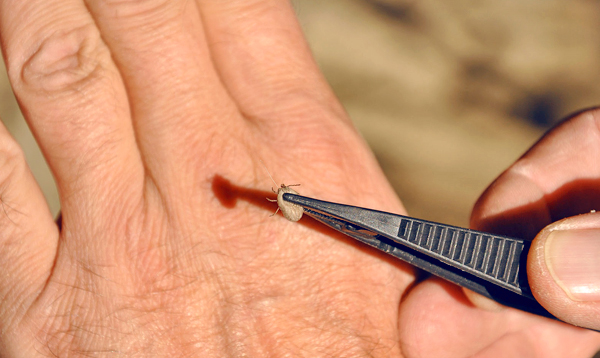
It is not so easy to distinguish an encephalitic tick from an ordinary tick, but the solution to this problem becomes crucial if the bite occurred in an epidemiologically unfavorable region. After all, if the parasite is encephalitic, then with a bit of a bite it could transmit a tick-borne encephalitis pathogen to a person and, perhaps, at the end of the incubation period, the victim will develop the disease with all its terrible symptoms. Given the mortal danger of this disease, there is a need in the shortest possible time to undergo a course of emergency prophylaxis. And it is difficult, expensive, and for a long time, and taking into account the realities of the work of domestic medical institutions, it is also not very pleasant (it is unlikely someone likes to queue at polyclinics).
If a person was bitten by an uninfected tick, then no complicated actions are required.It is enough to properly remove it from the skin and disinfect the wound. This is much easier than carrying out prevention of encephalitis, and certainly safer than curing this disease.
So how do you determine whether the tick is encephalitic that has been removed from the skin or not? Let's understand ...
Is it possible by external signs to find out that the parasite is a carrier of tick-borne encephalitis virus?
Just in appearance, it is impossible to distinguish an encephalitic tick from one that is not a carrier of infection. The presence of the virus in the body of the parasite does not manifest itself externally - neither in the form of the body, nor in the coloring, nor in the behavior. Infected ticks have no obvious signs of infection.
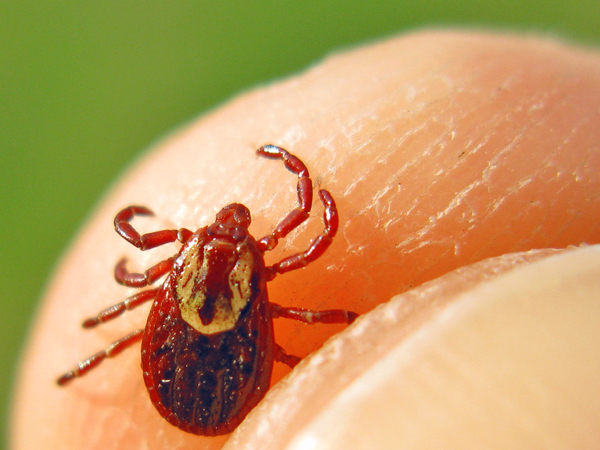
On a note
If you put an encephalitic tick and a normal tick next to each other, both of which will belong to the same species and are at the same stage of development, then no external differences between them will be found. And even a magnifying glass or a microscope will not help to do this, that is, it will not work to distinguish such individuals at home.
In other words, simply finding out whether tick is encephalitic will not work.This can not be done even by a specialist acarologist who is well able to identify the types of ticks and to distinguish them from each other.
The concept of "encephalitis tick" indicates precisely the infection of a particular individual with the tick-borne encephalitis virus. Many untrained people mistakenly believe that an encephalitic tick is a particular species, all individuals of which are carriers of the infection, unlike the other, “simple” tick, whose bite is harmless to humans.
In fact, the established carriers of tick-borne encephalitis are 14 species of ticks, quite similar to each other in appearance, but also having certain features of appearance and color, allowing them to be distinguished from each other and from other species that do not tolerate the pathogen. Of these 14 species, the main carriers of infection that infect humans, in the overwhelming majority of cases, are two:
- Canine tick (aka European forest tick);
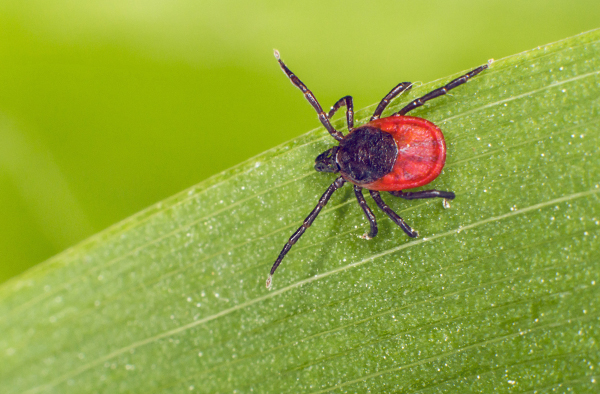
- and not much different from him Taiga tick.
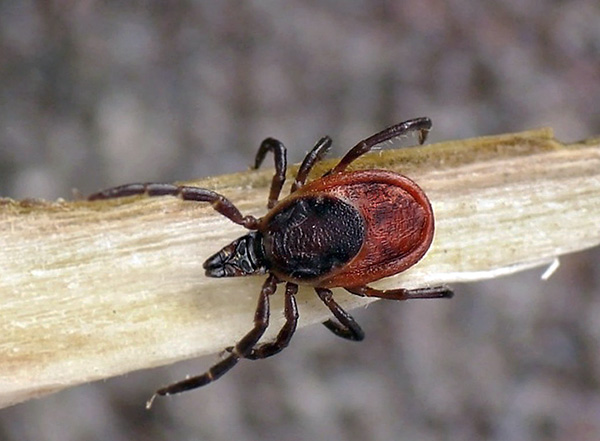
The first is responsible for cases of infection with encephalitis in the countries of Western Europe, in Ukraine, Belarus and in western Russia (for example, in the Kaliningrad region), the second in Siberia and the Far East.
This means that a specific species - encephalitis tick - does not exist.There are several species, various morphologically and ecologically, that can carry the virus.
On the other hand, even the most malicious carriers of the virus are not all polls infected.
According to statistics, only about 6% of individuals of species that carry encephalitis are infected. That is, for 15 individuals-representatives of these species, which actually belong to the cohort of “encephalitis”, only one individual will actually represent an epidemiological danger.
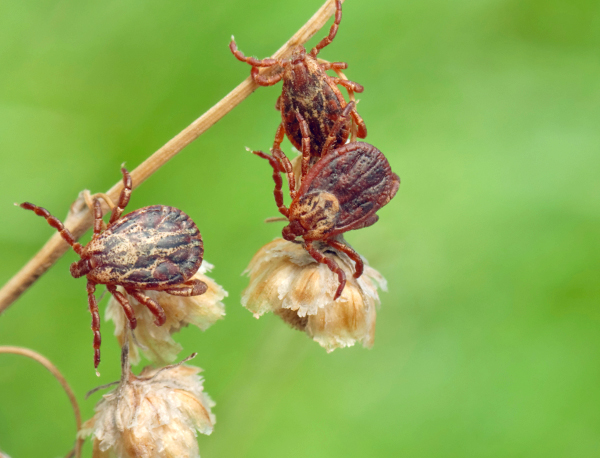 Moreover, according to the same statistics, after being bitten by infected ticks, without taking appropriate measures, only 2 to 6% of the bitten people fall ill. Consequently, in those regions where there is a risk of tick-borne encephalitis, out of 10 thousand bites a maximum of 24 will lead to the development of the disease.
Moreover, according to the same statistics, after being bitten by infected ticks, without taking appropriate measures, only 2 to 6% of the bitten people fall ill. Consequently, in those regions where there is a risk of tick-borne encephalitis, out of 10 thousand bites a maximum of 24 will lead to the development of the disease.
On a note
According to statistics collected in hospitals, the average incidence of tick-borne encephalitis among all the bitten and sought help is about 0.50-0.55% (about 5 people per 1000 bitten). Given the number of people who do not go to the doctor after the bite, this figure is actually even lower - about the same 0.2-0.3% (20-30 infected per 10,000 bites).For tick-borne borreliosis, this indicator is 1.5 times higher - about 1.3% for people officially registered when they go to the hospital.
This, in turn, means that the bite of even the tick that exactly carries the virus does not necessarily lead to infection.
The main conclusion can be made: it is never possible to tell from external signs whether a tick is contagious or not, and even more so it will not be possible to immediately understand whether a parasite has infected a person with a bite. The same is true for cases when the parasite is removed from a pet - by external signs it will not be possible to understand whether a tick has bitten a dog or a cat that is infectious.
However, by the appearance of the bloodsucker, it is possible to determine the probability (not a fact, namely, a chance) that it is encephalitic. For this you need:
- To assess the region in which the bite occurred;
- Understand that the parasite belongs to the family of ixodid ticks;
- If possible, determine whether it belongs to the dyad of the main carriers - it is either a dog or taiga tick.
The tick, which may well be a carrier of tick-borne encephalitis virus, is shown in the photo below as an example:
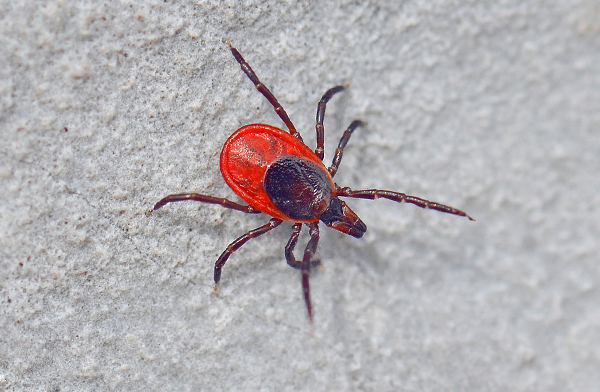
Simply put, if it was possible to determine that a person has bitten an Ixodes tick in an epidemically dangerous area of tick-borne encephalitis, then the probability of infection is no longer zero.If, on examination of the parasite, it turned out to recognize a dog or taiga tick in it, then the probability of infection is even higher.
Next, we will look at what signs can be recognized as a possible carrier of tick-borne encephalitis ...
Differences of types of tick-carriers of encephalitis from related species
The first task in determining the type of tick in our case is to understand that it belongs specifically to the family of ixodid ticks. They have a fairly distinctive appearance, with a flattened body from the back and a very small head. Ticks from other families differ from ixodic body shape.
For example, the photo shows Dermacentor silvarum tick, a typical representative of Ixodide that carries encephalitis:
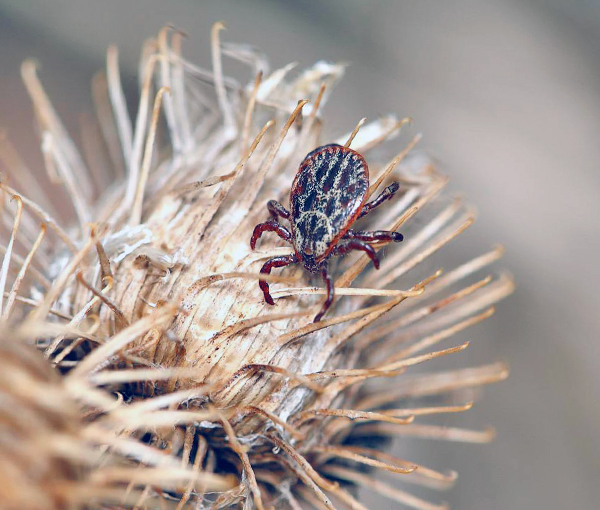
Here is a shell mite from the family of argas mites:
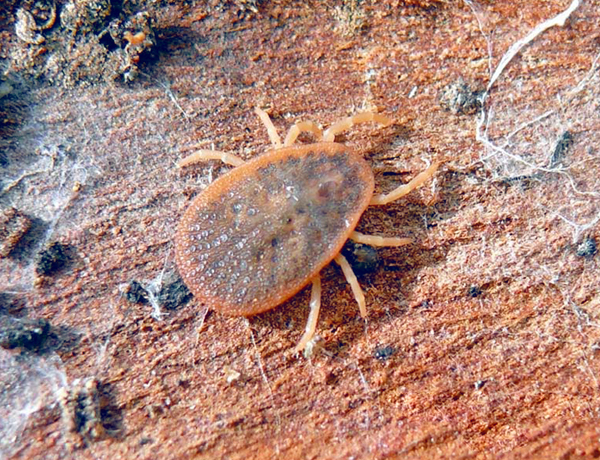
And in this photo - Androlaelaps schaeferi gamasid mite:

Encephalitis is tolerated only by ixodic ticks. If in a region with a high epidemiological risk such a parasite has bitten, then it is likely that it could infect a person with a virus.
Even more likely to become infected with a bite, if either a taiga or a dog tick has been removed from the body. Outwardly, they are very similar to each other.The photo below shows an adult hungry female of the taiga tick:

And here is a female dog tick:
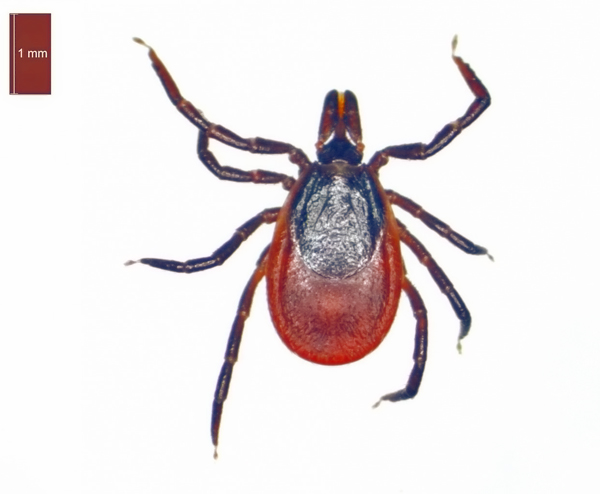
It is practically impossible for an incompetent to distinguish them, since the reliable differences between them are too insignificant - these are the structural features of the proboscis and the body scute. But it makes no sense to distinguish between these species: both of them are equally likely to be carriers of infection.
On a note
In the European region, people are mainly attacked by a dog tick, beyond the Urals - a taiga tick. For this reason, the dog tick is also called the European forest, and the taiga tiger is also called the Siberian.
It is possible to distinguish representatives of these two species from relatives in the family of ixodic ticks by coloring: taiga and dog ticks in adulthood have a clearly visible black or dark green shield and a brown body. When saturated, their body increases in size several times and becomes light gray.
You also need to be able to distinguish ticks from some blood-sucking insects. In particular, in the forest and taiga zones with ixodides it is easy to confuse bloodsucker flies, the most common and well-known of which are reindeer bloodsucker (it is also called elk mite).These flies attack various large animals and humans, and they tend to climb in the hair and move between them. Blood suckers pursue their prey in flight, but, clinging to wool or skin, shed their wings and begin to suck blood — such a wingless individual is easily confused with a tick.
The photo below shows a bloodsucker:
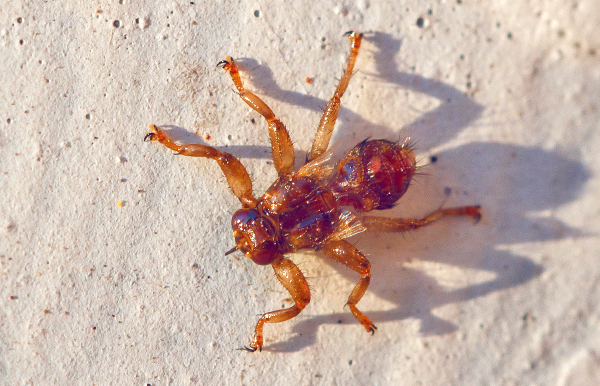
And here - not yet fed into the usual forest mite:

The photograph shows the main difference between these arthropods: the lee has six legs, and the tick has eight legs.
The main thing: the bloodsuckers do not tolerate encephalitis and do not infect humans with any infections at all.
With this in mind, in the case of a tick bite, it is only with a certain probability that it can be infected with a virus or not. But in order to find out exactly, it will require completely different research methods ...
The only way to find out whether an encephalitis tick or not
For sure to find out that a tick that bit a person is infected with tick-borne encephalitis virus is possible only by the results of a special laboratory study. The essence of this study is simple:
- A bitten person saves the parasite in any way (preferably alive - so the analysis can be carried out within a few days after the bite), puts it in an empty bottle,a matchbox or even in a plastic bag, and transported to the laboratory;
- In the laboratory, using special microbiological methods (mainly ELISA test, less often PCR analysis), certain parasite tissues are examined and the presence of tick-borne encephalitis pathogen is detected in them;
- If the pathogen is detected, it is concluded that the tick is contagious. If the pathogen is not detected, respectively, the parasite is recognized as uninfected.
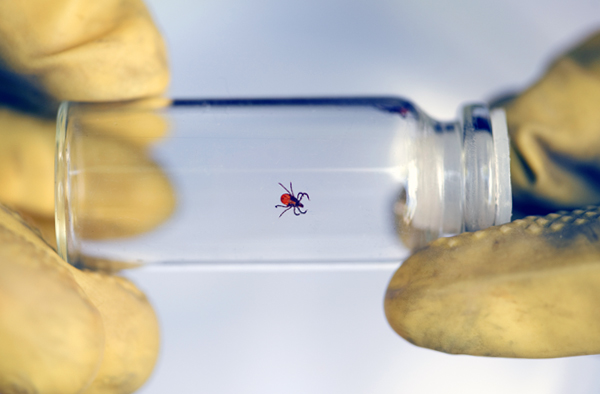
Such studies are very effective. It is very easy to detect viral RNA in tick tissues using affordable and inexpensive methods, such analyzes are carried out over several hours and give a result with a high degree of accuracy. They also make it possible to determine with a high probability whether a person needs emergency prevention of the disease.
On a note
According to a study conducted in clinics in Irkutsk, tick-borne encephalitis prophylaxis actually requires only 12% of people affected by bites, regardless of how many parasites have been bitten by a particular person. It is clear that the risk of infection will be higher for a hunter or a tourist, from whom several dozens of fed ticks were removed than for a person who rested in the park and removed one parasite that had just stuck.These figures show that the need for urgent measures is needed not every bitten.
It should be remembered here that even if the bloodsucker is contagious, the probability of the disease developing in the person he has bitten without taking any measures is approximately 2-6%. That is, even after a positive result of the study of a tick in the laboratory, it is not at all necessary that the disease develops. Nevertheless, the risk of its development is a sufficient reason for taking emergency measures.
How and where to take a tick for analysis
In regions with a high epidemiological risk of tick-borne encephalitis, the analysis of ticks taken for infection is carried out in most laboratories at clinics and hospitals. The technique of emergency research on ticks was initially tested in Krasnoyarsk, Irkutsk, Tomsk, Novosibirsk, Omsk and Yaroslavl, and when it showed good results, it was introduced into regular practice in most cities of Russia, Belarus and Ukraine.
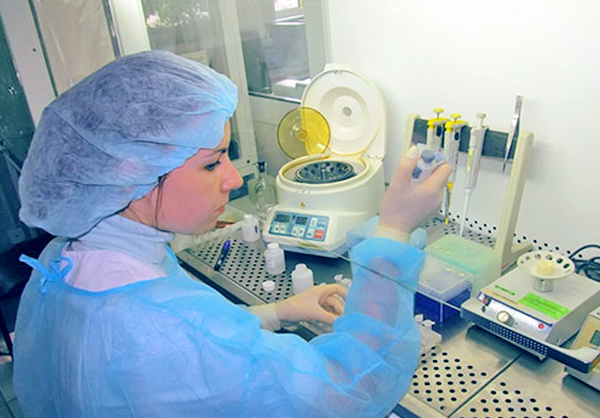
You can conduct an analysis yourself or find out where you can carry a tick for research, in the following institutions (by phone):
- In any clinic or hospital (and in rural areas - in the first-aid post or at the district physician);
- In any emergency room;
- In the nearest branch of the Sanitary and Epidemiological Station;
- In private laboratories and diagnostic rooms;
- In the centers of Rospotrebnadzor.
In the case of a bite, it is enough to call any of these institutions and find out where to turn. On the phone they will say either the address of the laboratory or its phone number.
On a note
If the victim cannot take a tick on his own or is afraid to do it, the doctor at the clinic will be able to carry out all the necessary manipulations and he will hand over the parasite for analysis.
The cost of tick analysis for encephalitis ranges from 300 to 700 rubles, depending on the region and the prestige of the clinic (laboratory). Approximately at the same cost a separate analysis of the parasite will cost Lyme disease pathogen, and a comprehensive study on both pathogens costs less than two separate analyzes.
The quality and accuracy of analyzes in both public and private laboratories are the same. The advantage of public institutions is the lower cost of analysis, but in private clinics there is less queue, and the whole procedure is more comfortable and faster.


Ticks for analysis need to bring as quickly as possible. If he is alive, he may be injured when removed from the skin, leading to his imminent death. The dead parasite can be investigated for no more than 3 days after death, so if it was killed during removal, it should be taken to the laboratory immediately. If the tick is alive, it must be planted in an airtight container and delivered to it for analysis.
The urgency in this case is due to the fact that with a confirmed tick infestation, emergency prophylaxis should be started in the first 2-3 days after the bite. Only if carried out within these time limits will it provide the desired result and most likely prevent the development of infection. If during this time the parasite cannot be delivered for inspection, then you can no longer fuss: it does not matter if it is infected or not, the deadlines have already been missed (however, you still have to try the research).
Debatable is the question of whether to conduct a comprehensive analysis of the parasite for tick-borne encephalitis and borreliosis. The main danger of tick-borne encephalitis lies in the complexity of its treatment and the absence of highly effective antiviral agents. This is due to the high incidence of disability and death in the event of illness.
Lime borreliosis is more easily and successfully treated due to the fact that its pathogen is sensitive to antibiotics.
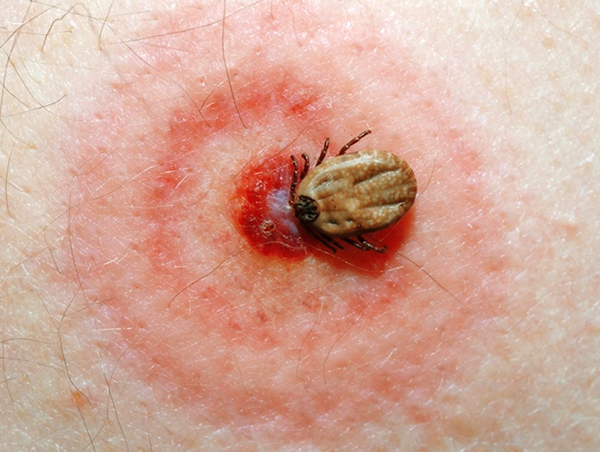
Therefore, if tick-borne encephalitis is easier and safer to prevent before the development of the disease, and for this it is worthwhile to carry out both tick analysis and emergency prevention, then borreliosis with timely diagnosis is easier to cure. Moreover, the probability of infection with a bite is also low. In general, in this matter it is better to follow the instructions of a specialist who knows the epidemiological situation in the area. If he considers that the probability of infection with Lyme disease is high, he will advise you to pass a comprehensive analysis. If such an analysis, in his opinion, would not be appropriate, he would not recommend it.
If the removed tick was infected with tick-borne encephalitis virus, then the victim requires the introduction of immunoglobulin as a measure of emergency prevention of the development of the disease. Consultation on further action will give the doctor in the institution in which the study was conducted.
What to do if to analyze the infection of the parasite failed?
It is possible that it was not possible to deliver the tick for analysis to the laboratory.Consequently, it is not possible to understand whether it is infectious, or is common. This can happen in a hiking trip (it is unlikely that anyone would think of removing a group from the route in Altai if one of the participants was bitten by a tick), on a long hunting trip, on an expedition. Finally, the bitten one can live in a very remote village, from where it is extremely difficult to quickly deliver the parasite for analysis.

This may also include a situation where the tick simply did not have time to deliver to the study within 2-3 days after the bite.
What to do in such cases?
First, it is no longer necessary to take a tick for analysis. Even the understanding that he was infected with tick-borne encephalitis virus or borrelia will not be a reason for urgent measures: the terms of emergency prophylaxis have already been missed, and it is not advisable to start treatment without the presence of symptoms of the disease.
Secondly, there is no need to carry out emergency prophylaxis of tick-borne encephalitis by any means. If it was not possible to take the parasite to the hospital in 2-3 days, then it was not possible to introduce an immunoglobulin at the same time. Later it makes no sense to introduce it, since it will not have a pronounced action.
Thirdly, you need to carefully monitor the condition of the victim. If there are obvious symptoms of either encephalitis or borreliosis, then you should consult a doctor as soon as possible.
Symptoms of tick-borne encephalitis after a bite develop at different times - depending on the subtype of the virus, usually from 3 to 14 days. The first symptoms of the disease are fever, pain in the head and muscles, chills, nausea. If they appear, you must immediately take the victim to the hospital.
It is important to know
For the European subtype of the virus, there is a special pause, when after 2-3 days of fever the patient's condition returns to normal, and then the brain damage begins with impaired consciousness and even paralysis. If remission is taken for the completion of the disease and nothing is done, then you can miss the moment when you can still do without the serious consequences of the disease.
When infected with the Far Eastern subtype of a virus, both phases merge, the general symptoms are more pronounced, the disease proceeds very rapidly.
When infection with borreliosis in the acute phase of the disease develops fever, and may appear migrating erythema - ring-shaped redness around the bite.Similarly, when these symptoms appear, you should consult a doctor as soon as possible. If antibiotics are started on time, the disease is likely to be cured safely.

You can also donate blood for antibodies to tick-borne encephalitis or lime borreliosis. The analysis of immunoglobulins for the CE virus is given 2-3 weeks after the bite, and borreliosis - in 3-4 weeks. Previously, it is pointless to take them, because even when infected, the antibody titer will not have time to increase to those values that will be a sign of infection.
Even if the first antibody test did not give results, it is useful to repeat it after a month. The dynamics of changes in antibody titer and their composition will be an important sign of infection. If both tests for each infection are negative, then you can calmly take a breath: the infection did not occur.
When you can never worry about tick infestation
Finally, there are situations in which you can not worry about tick infestation at all.
For example, there is no point in bothering about determining the parasite's infectiousness if it has bitten in a region where encephalitis has not been recorded, or isolated cases of the disease have been known.
Thus, in most parts of Ukraine and in the southern regions of the Russian Federation, many mothers go crazy with fear when they discover a tick on a child, although in fact the probability of infection with TBE here, although not excluded, is so small that no special measures are required. Almost certainly, the tick here will not be encephalitic and will not infect the victim with a virus.
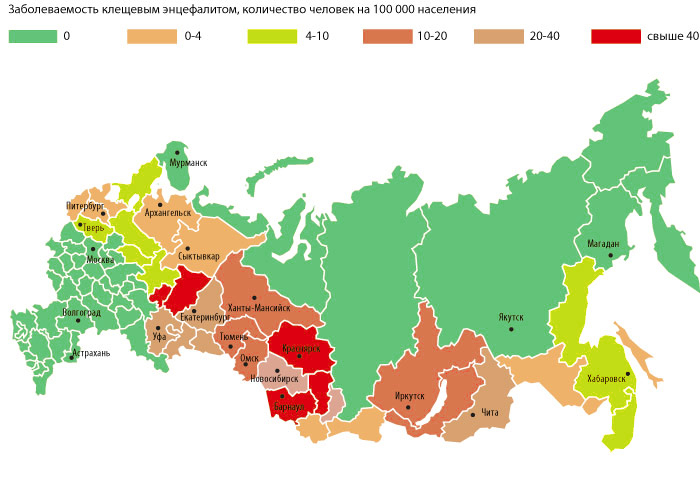
Further, when traveling to a region with an increased risk of tick-borne encephalitis infection, an elementary safety measure is an anti-encephalitis vaccine. It ensures that after a bite, even a infected parasite does not get sick. If the vaccination is done, then it is not necessary to find out if the tick is contagious or not. And to go to such a region without vaccination and then walk through the forest is unwise.
If the tick has not yet bitten, but is simply found on the body or on clothing, it is enough to simply brush it away. Without a bite through the skin, the virus is not transmitted, and it is impossible to get infected simply from a parasite crawling on the skin.
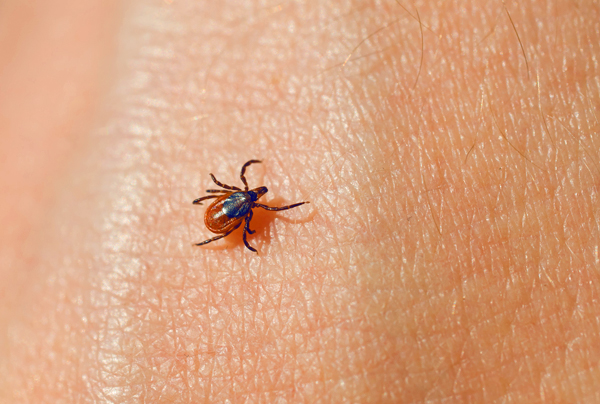
Finally, no need to worry if after a walk in nature, a bite was found on the body, but it is not clear who left it. Most likely, this is not a tick, because it sucks blood for a long time - from several hours to several days, and if the bite is detected, then it is with the parasite that has adhered.
Be that as it may, in each particular case after a tick bite, it is most correct to find an opportunity to contact a doctor (preferably an infectious diseases specialist) and consult him. He will be able to say exactly how to be in a particular situation, where and when to ask for help. It is much more reasonable and safer to follow his recommendations than to independently determine the infection of a tick and to draw some conclusions.
Interesting video: how to safely protect yourself from tick-borne encephalitis
The first steps in detecting a tick on the body

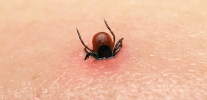
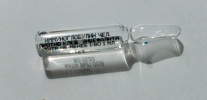
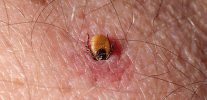
Thank. Everything was very helpful and clear. My son is 5 years old, yesterday he had a tick. Doctors prescribed antiviral + amoxicillin. We are waiting for the result of the analysis now. Dear parents, please be more careful with your children! Very afraid of the result!